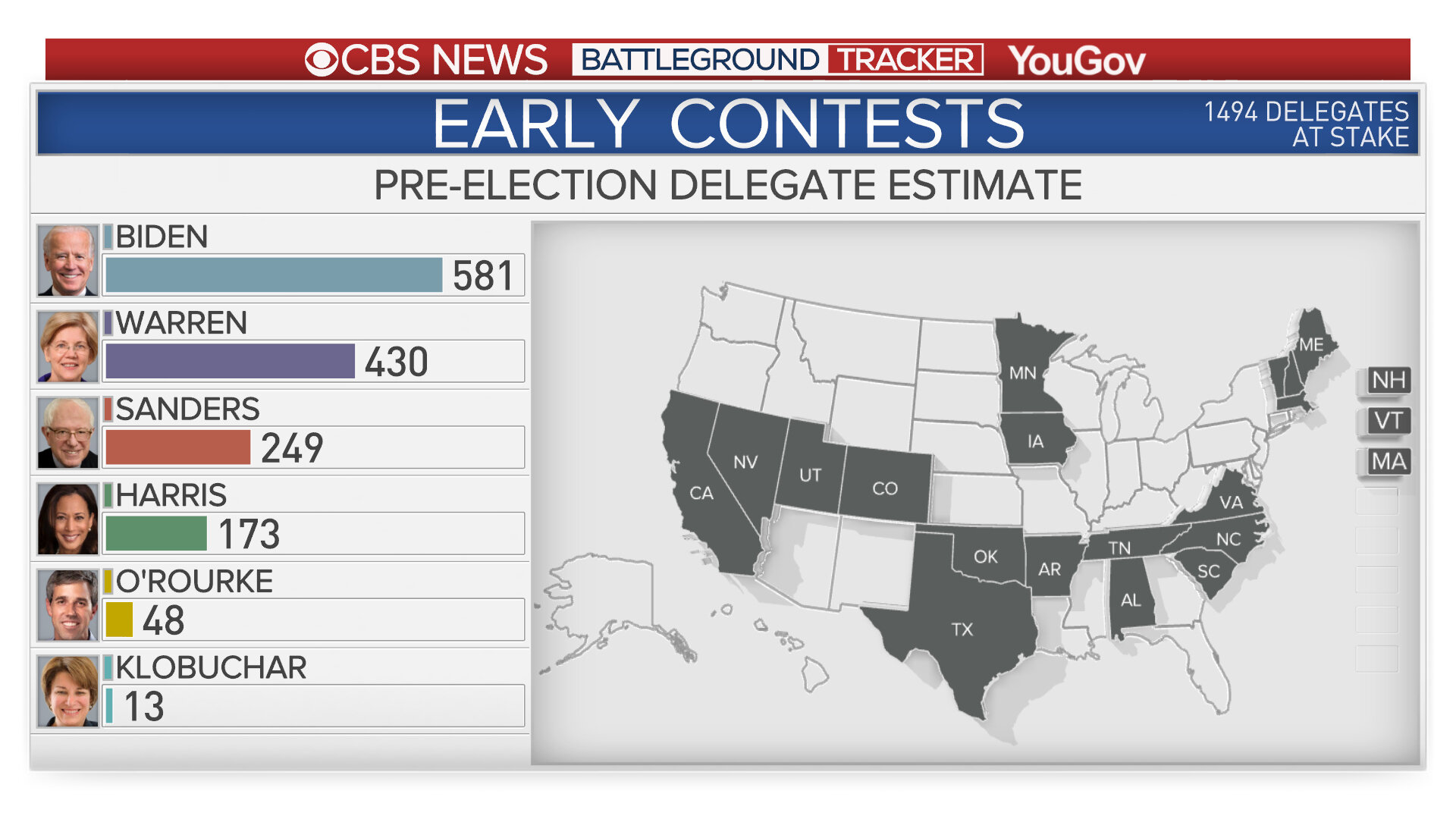Here are some of the projects I’ve worked on at CBS News and articles I’ve written on election modeling and public opinion. You can find more here: https://www.cbsnews.com/team/kabir-khanna/.
Battleground Tracker 2022
While prominent forecasters and pundits were predicting a red wave, our statistical modeling consistently showed modest GOP gains in the U.S. House. And our scenarios illustrated Democrats’ path to narrowly holding a majority.
Related articles
Republicans head into final week with lead in seats / turnout scenarios (10/30/22)
Republican lead in House shrinks again as voters see high-stakes contest (9/27/22)
Battleground Tracker 2020
We take a state-by-state approach to understanding the U.S. election and tracking the race to 270. We measure what’s on voters' minds and provide detailed snapshots of each state throughout the campaign. Our statistical model combines survey data, Census data, and voter files to estimate every state in the country. More here.
Delegate Tracker
We estimated support for 2020 Democratic presidential candidates, explained why voters felt the way they were, and translated support into delegates — the measure by which the nomination is won. We developed a statistical model to estimate opinion in each state and district and to simulate hypothetical delegate allocations. More here.
Related articles
Debate watchers most impressed by Sanders and Biden, with CBS News Poll team (Feb ‘20)
What could happen in Iowa on Monday?, with Anthony Salvanto and Delia Bailey (Feb ‘20)
Five takeaways from five waves of primary polling (Dec ‘19)
Why voters aren't considering candidates and how the debates might change that (Sep ‘19)
Does Elizabeth Warren have room to grow? (Sep ‘19)
How financially concerned and comfortable Democrats differ on economy and 2020 candidates (Jul ‘19)
How liberal are Democratic voters? (Jul ‘19)
What traits are Democrats prioritizing in 2020 candidates? (May ‘19)
Primary analysis also featured in:
New York Times: The Democratic Party is actually three parties
Washington Post: The surprising fluidity of the Democratic field
New York Magazine: Why the Iowa Caucuses are biased against your candidate
House Model 2018
We tracked the battle for control of the U.S. House in the 2018 midterm elections. We fielded national surveys with oversamples in competitive districts, and used multilevel modeling to estimate each party’s most likely seat share. We published ratings of each seat (Lean D, toss up, etc.), as well as scenarios, including the blue wave. More here.
Related articles
Top House races to watch on Election Night, with Anthony Salvanto and Leah Askarinam (Nov ‘18)
Democratic lead continues to grow in race for House, with Anthony Salvanto (Oct ‘18)
CBS News Battleground Tracker: How does this model estimate work? (Jun ‘18)
U.S. Nation Tracker
Launched right after Trump’s inauguration, in partnership with YouGov, this ongoing study tracks public opinion on the presidential administration, economy, race relations, and many other issues. Re-interviewing people enables longitudinal analyses, such as exploring partisan change and stability over time. More here.




